Film Name:尋夢環遊記 / Coco
There’s a kind of masterpiece called “Pixar.”
The timeless classics of Pixar Animation Studios need no introduction. Time and again, they transport us to uncharted realms brimming with imagination—dazzling, heartwarming worlds that never cease to amaze… This time, we journey with “Coco” to Mexico’s Day of the Dead. Following the soulful rhythm of drums, we tread upon a bridge of marigolds, witnessing a quest for family that no barrier between worlds can halt.

Great films possess this magical quality: at the start, children in the back rows might still be making noise and chattering, but as the story unfolds, every audience member becomes utterly engrossed, eyes fixed on the screen until the final credits roll—a testament to how deeply the film draws you into its world.
[Friendly reminder: Spoilers ahead.]
The film’s stellar reception inevitably draws attention to its narrative. In an era where audiences grow increasingly discerning, crafting such a tender and moving story from a premise that isn’t exactly groundbreaking is akin to elevating a home-cooked meal to surpass the flavor of a top-tier restaurant—a feat far more challenging than simply dining out for the same taste.
“Coco” is unmistakably a script about youthful disappointment.
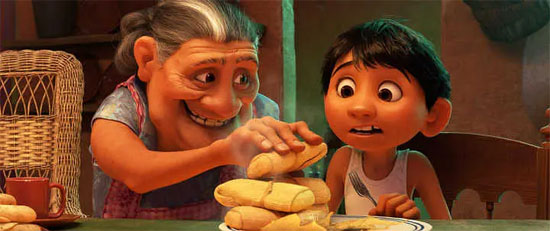
Despite growing up in a loving family with kind elders and never wanting for anything, young Miguel was bound by his great-grandmother’s ancestral decree forbidding any music in their lives—shoemaking was their sole purpose.
Perhaps the forbidden fruit is the sweetest, Miguel secretly builds a guitar and a music room, teaching himself to play by watching his idol Delacroix’s albums. He dreams of performing before an audience one day, shining brightly.
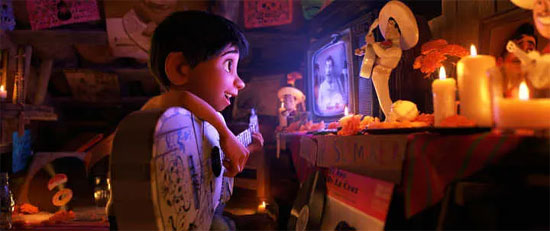
The great-grandmother strictly forbids her descendants from touching music because the great-grandfather abandoned his wife and daughter to pursue music.
The plot then unfolds predictably: Miguel’s dream is discovered by his family, leading to a huge fight and his running away from home. He accidentally discovers that his great-grandfather’s guitar is the very one played by De La Cruz. By a twist of fate, he “crosses over” into the Land of the Dead, where he sees his departed relatives and gains access to the City of the Dead…
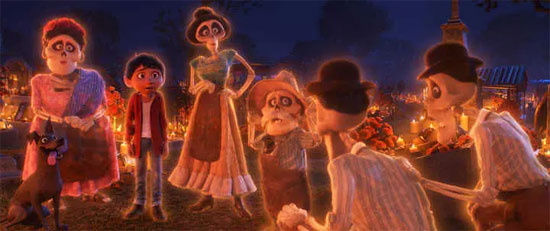
Up to this point, the story unfolds in a straightforward, formulaic manner. Even with solid foundational work, it’s hard to say how compelling it truly is.
Instead, the film relies heavily on its “unapologetically detailed and meticulous” technical prowess to draw viewers in: vibrant, colorful paper cutouts; bustling streets and alleys brimming with life; the brightly lit nights of the Day of the Dead…
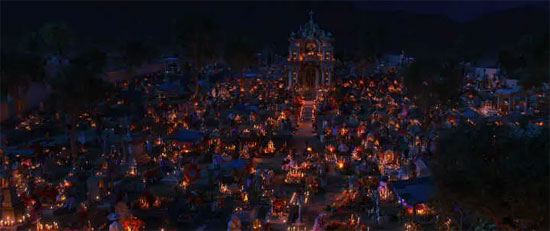
In such an environment, even a cemetery filled with the dead fails to instill fear. Instead, illuminated by flickering candle flames and marigold petals, it brims with remembrance and sorrow for the departed, enveloped in an ever-present warmth and gentleness.
Most viewers, upon stepping onto the petal bridge and beholding the City of the Dead, will surely echo Miguel’s spontaneous gasp of awe…
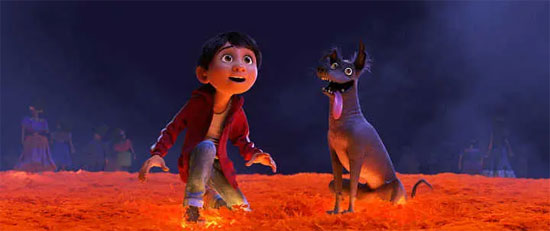
Even if you’ve glimpsed this scene in the trailer before, watching it in the theater still elicits a heartfelt “Wow…” This visual impact is every bit as powerful as seeing “Zootopia” for the first time in last year’s film.
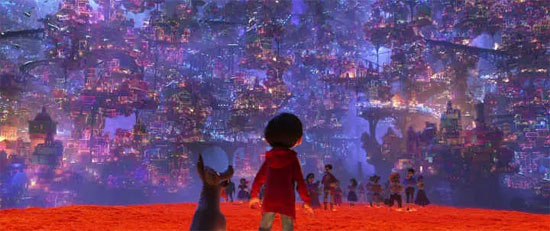
The flawless technology immerses the audience deeper into the City of the Dead. Now that the plot has “warmed up,” it finally shifts into high gear and races forward at full speed.
Of course, Miguel’s initial journey still follows the “usual pattern.” He encounters the originator of the family rule—his great-grandmother Imelda. To earn his family’s blessing and return to the human world? Fine—provided he never touches music again. In short, no mercy even in death.
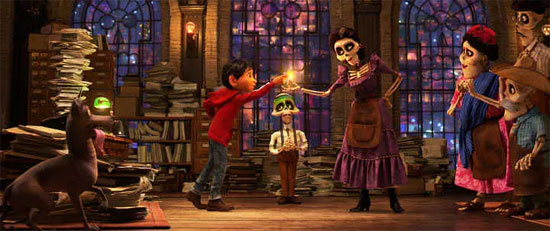
No way. Fearless Miguel’s youthful temper flares. My great-grandfather is the legendary Dracula! He’d surely approve and support my dreams. Wouldn’t seeking his blessing be better?
To chase a “dream” far from home, severing ties with family… ultimately achieving greatness and immortal fame… Dracus’ legendary life represented another possibility for existence—one Miguel had never touched yet yearned for intensely. In another world, Dracus briefly granted him that wish.
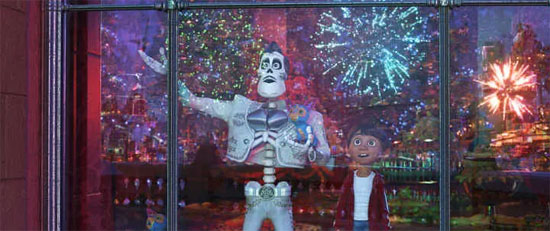
The reason it was fleeting is that this “glory” was too dazzling, like fireworks bursting in Delacroix’s name. They were brilliant and colorful, seeming to show one all the splendor of the world in an instant. But after the sparks faded, what remained was still dim and empty.
Another reason was that this “great-grandfather” who paraded Miguel around like a trophy, seemingly forgetting to send him back, was mistaken…
In the Land of the Dead, the one who truly shared a musical connection with Miguel was the “Wandering Soul” Hector.
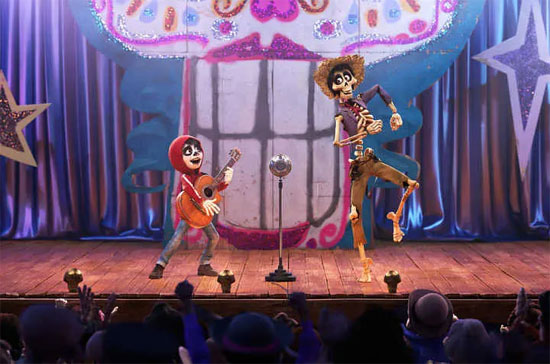
Hector desperately sought to return to the living world to see his daughter, yet his journey was forever blocked by the absence of his “imprint” (a photograph) in the mortal realm. He feared “true death,” especially as his time drew near—for when no one in the living world remembered him, his spirit in the realm of the dead would truly vanish without a trace.
This reminded me of a line spoken by the “quack doctor” Silvers Rayleigh in the manga “One Piece,” making me particularly receptive to the “view of life and death” presented in “Coco”:
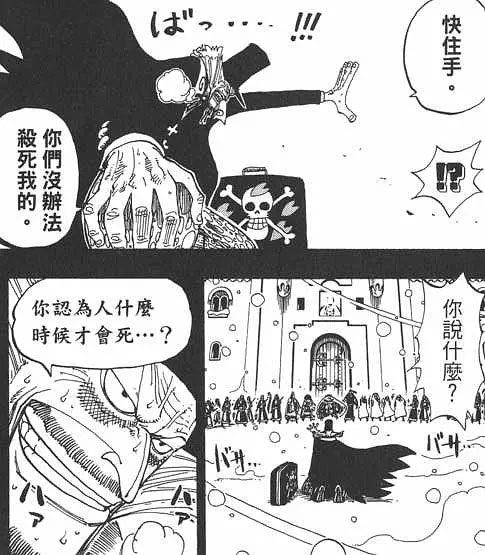
When do you think a person truly dies? When a bullet pierces their heart? No… When they contract an incurable disease? No… When they drink soup brewed from poisonous mushrooms? None of the above! It’s when they are… forgotten by others…!”
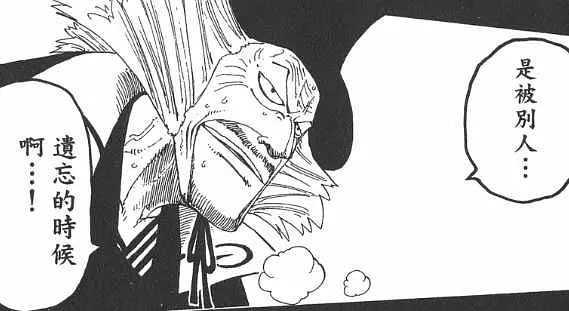
At life’s end, Hilk laughed without regret, shouting “Life is splendid!” as he met his heroic fate. Ultimately, he lived on forever in people’s hearts as the most brilliant cherry blossom.
In “Coco,” this sentiment is similar, yet the film’s core theme is “family bonds.”
Mexicans cherish the Day of the Dead because on this day, departed loved ones return to reunite with the living, transcending the boundary between life and death together—as long as the living remember the departed, the deceased continue to exist in another world, dancing and singing, enjoying life just as they did in the flesh.
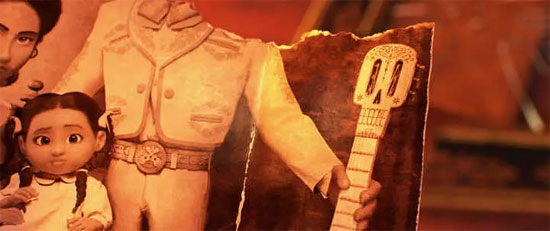
The film’s multiple plot developments and twists revolve around the photograph of Miguel’s great-great-grandmother’s family. The two most striking elements are undoubtedly the missing head of the great-great-grandfather and the hidden “legendary guitar.” The former is the film’s greatest mystery, while the latter serves as a crucial clue guiding the protagonist.
Yet the most pivotal figure in this photograph is Miguel’s great-grandmother—Hector and Imelda’s daughter, Coco.
This elderly woman, long marginalized, is now at the end of her life. But she remains the sole relative capable of bridging the two worlds of family.
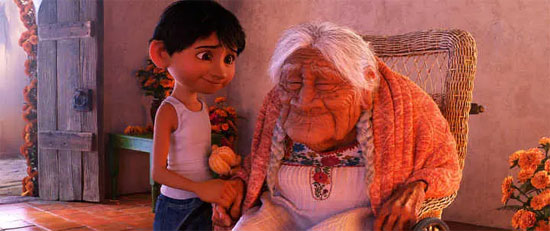
“Remember Me” is sung several times throughout the film, but the most moving rendition for me is undoubtedly Miguel’s final performance for his great-grandmother. Different voices singing the same melody, carrying the same familial affection and love. The song is both Hector’s tender care for and the heartfelt call that Miguel uses to pull his great-grandmother back—even if “Remember Me” becomes a globally beloved classic, their original intention was simply to sing it for one person.
I believe the film’s title, “Coco,” carries this very meaning: while the unknown and the things we pursue may seem important, the most precious people and moments are often right before our eyes.

After watching the film and reflecting on it, you might think, “The story isn’t particularly mind-bending or mind-blowing…” Yet you’ll still feel an overwhelming sense of warmth and tenderness—much like Miguel’s final transformation. What truly matters in the photograph isn’t the guitar, but the family of three reunited together. When you find yourself smiling without realizing it, that’s when you know it’s hit the right note.
Additionally, the film’s depiction of the Day of the Dead inevitably reminded me of the annual ancestral rites my mother tirelessly organizes. As a child, I dismissed them as superstition; as an adult, I gained a different perspective. Now, after watching “Coco,” I’ve gained yet another layer of understanding.
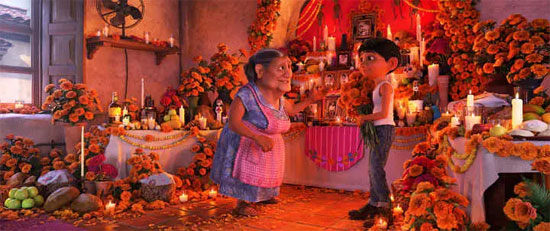
Setting the table, pouring wine, lighting candles—inviting ancestors and loved ones home for a visit… Remembering is not just for the departed, but for ourselves and future generations.
It’s like how Qingming and Winter Solstice inevitably call for tomb-sweeping and offerings. How wonderful it is to have someone honor you in life and remember you in death.
Please specify:Anime Phone Cases » Coco 尋夢環遊記 2017 Film Review: A song that echoes across the world, Yet I only wish to sing it for one person.